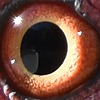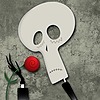HOME | DD
 TheBootesArtVoid — The Eye Of The Kookaburra (Enclosure)
TheBootesArtVoid — The Eye Of The Kookaburra (Enclosure)

#animal #animals #australia #bird #birds #natural #nature #photo #photos #wildlife #australianwildlife #kingfisher #kookaburra #naturephotography #photography #photographyanimals #photographynature #photographyphoto #wildlifephotography #birdphotography #thebootesartvoid
Published: 2022-01-10 09:38:41 +0000 UTC; Views: 8415; Favourites: 304; Downloads: 0
Redirect to original
Description
Species Name: Laughing Kookaburra
Species Latin Name: Dacelo novaeguineae
Also known as: Laughing Jackass
Native To: Australia, introduced to New Zealand
Located in: In Australia these birds are found throughout the eastern portions of Australia including all of Victoria, most of New South Wales save for the far north west, eastern half of Queensland, far south eastern portions of South Australia, and most of Tasmania save for the far south east. These birds can also be found in the far south west portions of Western Australia.
Habitats: Woodlands, fores clearings, timbered watercourses, farmland, orchards, parks, urban and suburban areas such as gardens.
Size (length): 410 – 470 mm (16.1 – 18.5 inches)
Wing span: 187 – 233 mm (7.4 – 9.2 inches)
Bill size: 60 – 77 mm (2.4 – 3.0 inches)
Weight: 200 – 480 g (7.1 – 16.9 ounces)
Lifespan: 11 – 20 Years
Group Name: Flock or riot
Group Type: Family groups
Diet: These birds are carnivores that mainly feed on mice and similar sized mammals, large insects, yabbies, lizards, small birds and their nestlings, and snakes. They are also known to take fish out of garden ponds. These birds will perch on a convenient branch or wire and wait patiently until they see an animal on the ground or in the water and then fly down and pounce on their prey before returning to their perch to eat.
Lifestyle: Arboreal, altricial, ambush predator, oviparous, territorial
Migration Behaviour: Not a migrant
Voice: These birds are known for their iconic laugh like call which start with a low kind of 'ooo' or 'kook-kook-kook' rising to a shouted 'ha-ha-ha' or 'kook-kook-kook-ka-ka-ka' which then slowing to few chortles/chuckles. Their call is used to establish territory among family groups. There are further complexities of the call which can vary between males and females. These birds are also capable of other simpler
Mating Behaviour: Laughing Kookaburra's are monogamous and form pairs that mate for life. During mating season the female will adopt a begging position and vocalize like a young bird. The male will offer a catch to the female whilst making an 'oo oo oo' sound. If their first clutch of eggs fail they will continue to attempt to breed into the summer months. The female will lay 3 eggs at two-day intervals. Both parents (and sometimes other helpers in the family) will help incubate the eggs. Chicks are born with a hook on their beak which falls off when they fledge. If food is short the chicks may quarrel and kill one another to eliminate competition in the nest. Young females will leave the family when they are around 1-2 years of age whereas the males will leave at around 2-4 years of age.
Reproductive Season: September - January
Nest Description: Nest will usually be in a tree hollow, a hole in a bank, in a tree termite nest, haystack, or in a hole in a wall.
Eggs Per Clutch: 2 – 3 eggs
Egg Description: White and roundish
Egg Size: 45 x 35 mm (1.8 – 1.4 inches)
Incubation Period: 24 – 29 days
Fledge date: 32 – 40 days
Independent Age: 10 – 13 weeks
Scientific Classification:
Domain: Eukaryota
Kingdom: Animalia
Phylum: Chordata
Class: Aves
Order: Coracliformes
Family: Alcedinidae
Subfamily: Halcyoninae
Genus: Dacelo
Description:
These mediuym sized kingfisher birds are easily recognised by the white feathers along their head, throat, chest, belly and underside. They have a distinctive brown patch of feathers along their cheek and ear and along the top of their head. They have brown feathers along their back and along their wings, their wing feathers will have some blue and white colouration to them along the tips of their wing feathers. Their tail feathers will be barred tails of orange, brown, and white. Males will have a blue rump. They have medium brown eyes. Adults will have a heavy powerful bill which is dark grey on top and a dark cream/orange colour on the bottom. Juvenile's will have a completely black bill.
Behaviour:
Laughing Kookaburras do not migrate and will tend to live in loose family groups that occupy the same territory throughout the year. The family group will consist of a breeding pair and their offspring who help the parents hunt and care for new hatchlings. If a family group hears a rival family group letting out their call the family will gather to ring out their own laughing call in response to reinforce their own territory. The individual Laughing Kookaburra's will raise their head up and back as they let out their laughing call, this can prompt a chain reaction of other family groups responding in kind until the entire area is filled with the sound of these laughing calls.
Population (approximate): 800,000 – 85,000,000
Population Trend: Stable
Conservation Status: Least concern
Potential threats and conservation:
The numbers of birds vary depending on the source with some citing 800,000 to others indicating 85 million. There are less than 500 of these birds in New Zealand however, these birds are an introduced species in New Zealand. Whilst these birds are not currently considered under threat these birds are vulnerable to habitat destruction as well as from poisining from pesticides.
Further Reading (general information):
Wikipedia: en.wikipedia.org/wiki/Laughing…
Birdlife: birdlife.org.au/bird-profiles/…
Australian Museum: australian.museum/learn/animal…
Birds In Backyards: www.birdsinbackyards.net/speci…
Backyard Buddies: backyardbuddies.org.au/backyar…
Animalia: animalia.bio/laughing-kookabur…
Book References:
The Australian Bird Guide Revised Edition published by CSIRO Publishing
Birds of Australia published by DK Nature Guide
The Field Guide to the Birds of Australia published by Harper Collins
The Slater Field Guide To Australian Birds Second Edition by Peter Slater, Pat Slater, and Raoul Slater
Related content
Comments: 19

👍: 1 ⏩: 1

👍: 0 ⏩: 0

👍: 1 ⏩: 1

👍: 0 ⏩: 1

👍: 1 ⏩: 0

👍: 1 ⏩: 1

👍: 0 ⏩: 0

👍: 0 ⏩: 0

👍: 1 ⏩: 1

👍: 0 ⏩: 1

👍: 1 ⏩: 0

👍: 1 ⏩: 1

👍: 0 ⏩: 1

👍: 1 ⏩: 0

👍: 1 ⏩: 1

👍: 1 ⏩: 1

👍: 1 ⏩: 0

👍: 1 ⏩: 1

👍: 1 ⏩: 0



























